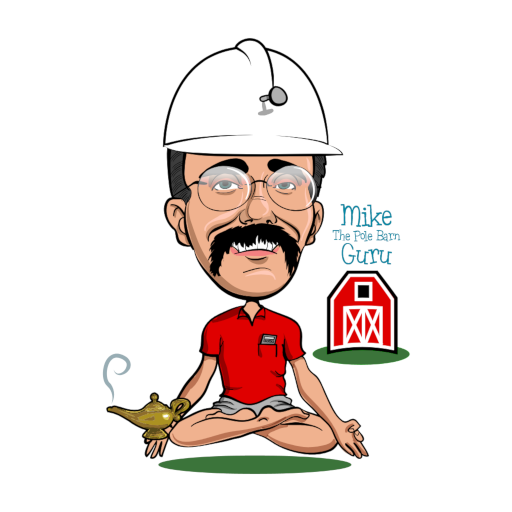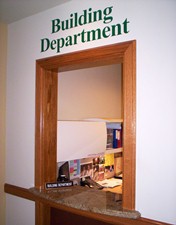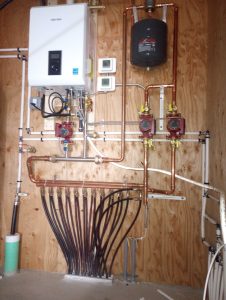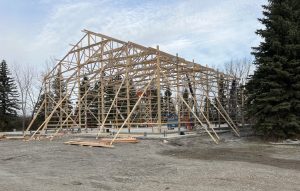As I mentioned yesterday (in case you missed my post), many a person has purchased a nail gun in eager anticipation of using it to save time and effort in construction of their new pole building. Inherent in any tool is the “safety first” concerns it brings along with it.
Nail gun work rules and procedures should be developed to address risk factors and make the work as safe as possible. Examples include but are not limited to the following:
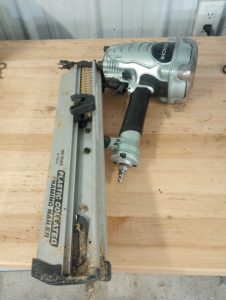 Do’s…
Do’s…
Make sure tool manuals for nailers used on the job are always available on jobsite.
Make sure manufacturers’ tool labels and instructions are understood and followed.
Check tools and power sources before operating to make sure they are in proper working order. Take broken or malfunctioning nail guns out of service immediately.
Set up operations so no one is in firing line from nail guns being operated.
Check lumber surfaces before nailing. Look for knots, nails, straps, hangers, etc. which could cause recoil or ricochet.
Use a hammer or positive placement nailer when nailing metal joinery or irregular lumber.
For placement work, keep hands at least 12 inches away from the nailing point at all times. Consider using clamps to brace instead of your hands.
Always shoot nail guns away from your body and away from co-workers.
Always disconnect compressed air when: Leaving a nailer unattended; Travelling up and down a ladder or stairs; Passing nail gun to a co-worker; Clearing jammed nails; Performing any other maintenance on a nail gun.
Recognize the dangers of awkward position work and provide extra time and precautions: Use a hammer if you cannot reach the work while holding nailer with your dominant hand.
Use a hammer or reposition for work at face or head height. Recoil is more difficult to control and could be dangerous.
Use a hammer or full sequential trigger nailer when working in a tight space. Recoil is more difficult to control and double fires could occur with contact triggers.
Take extra care with toe-nailing. Nail guns can slip before or during firing because the gun cannot be held flush against the work piece. Use a nail gun with teeth on the safety contact to bite into the work piece to keep gun from slipping during the shot. Use the trigger to fire only after the safety contact piece is positioned.
Recognize the dangers of nail gun work at height and provide extra time and precautions: Set up jobs to minimize the need for nailing at height.
Consider using scaffolds rather than ladders.
If work must be done on ladders, use full sequential trigger nailers to prevent nail gun injuries which could occur from bumping a leg while climbing up or down a ladder.
Position ladders so you don’t have to reach too far. Your belt buckle should stay between side rails when reaching to the side.
Maintain three contact points with the ladder at all times to prevent a fall—this means clamps may need to be used for placement work. Holding a nailer in one hand and the work piece with the other provides only two contact points (your feet). Reaching and recoil can make you lose your balance and fall. Falls, especially with contact trigger nailers, can result in nail gun injuries.
Never bypass or disable nail gun safety features. Tampering includes removing spring from the safety-contact tip and/or tying down, taping or otherwise securing trigger so it does not need to be pressed. Tampering increases the chance nail gun will fire unintentionally both for the current user and anyone else who may use the nail gun. There is NO legitimate reason to modify or disable a nail gun safety device!
Keep fingers off trigger when holding or carrying a nail gun. If this is not natural, use a full sequential nail gun or set down the nailer until beginning to nail again.
Never lower nail gun from above or drag the tool by the hose. If nail-gun hose gets caught on something, don’t pull on hose. Go find the problem and release the hose.
Never use a nailer with the non-dominant hand.
Properly used, a nail gun can safely speed up your new pole building’s construction. And, it is a great gift for the Do-It-Yourselfer on your list. Print two copies of my list of Do’s and Don’ts and include one with the nailer gift, and hang the other near where your own nailer is stored – taped to the storage box or cupboard door. I know at Hansen Buildings, all equipment and tools operators are required to read safety rules and “sign off” before they are allowed to use them. Don’t you want the same basic nail gun safety measures followed for your loved ones?
